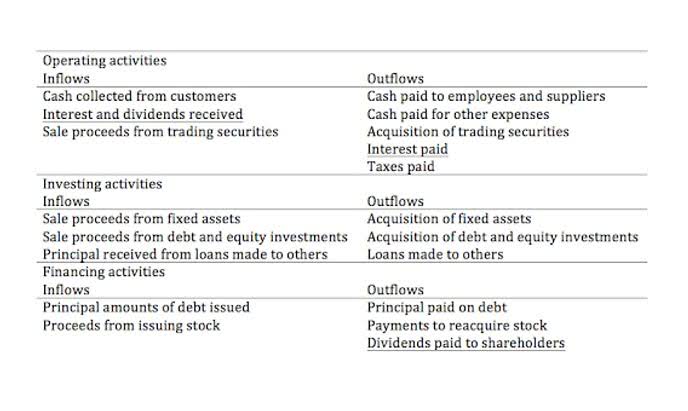
Next, the accounts receivable control account will be updated again to reflect the new transaction. The accounts receivable control account would also be updated to reflect this transaction. When transactions occur in subsidiary accounts, corresponding entries are made in the control account.
- A control account is a general ledger summarising an account representing a collection of connected subsidiary accounts.
- They are primarily designed to consolidate and validate transactions for specific types of accounts like accounts payable or receivable, not all transactions within an organization.
- To manage them properly, you have to first make a subsidiary ledger where you will keep a record of all customers in one place.
- Secondly, then you will make a control account in which you put the summary amount- total sales with its invoice price, total collections, or total payout.
- An organisation’s control accounts provide an overview of its transactions.
- However, in actual life especially when accounting is being done in a manual system (not in a computerized environment), this may not be the case all the time.
Need more details?

Those subledgers are then totalled up for each period and the totals are recorded in the accounts receivable control account. Put simply, this means that the accounts receivable control account indicates the total amount that a company is owed, while the subledger reflects how much each customer individually owes. The trade receivable for the period stands at ₹10000 in different debtors’ accounts, and the trade payable at ₹20000 in different creditors’ accounts. Control accounts are usually maintained by large organizations because of a high volume of transactions. To manage them properly, you have to first make a subsidiary ledger where you will keep a record of all customers in one place. At last, you can make a controlling account by putting ending balances of subsidiary accounts.
Corrective Controls
All the checks you write for manufacturing costs are posted first to control accounts. A) Extract the relevant information from above and prepare the sales ledger control account for the month ended 31 May 2003. Analysis of the creditors control account over time can reveal trends in credit purchases, payment patterns, and creditor relationships, providing valuable insights for HOA Accounting decision-making. General Ledger is the main ledger while purchases and sales ledgers are subsidiary to General Ledger. The general ledger contains the summary of all accounts; e.g., Assets, Liabilities, Capital, Creditors, Debtors, etc., used for the preparation of trial balance and final accounts. For Example in large organizations with multiple products and extensive credit sales, there will be many customers, so many personal ledgers for customers accordingly.
Accounting Control: Definition, Types, Examples
The cost ledger control account balance should be equal to the cost ledger net total entries.This account is used to complete double entries. A debit is made to this account when sales are made, and a credit is made when net profits or losses are transferred from costing profit and loss accounts. It represents the net total of all the balances in the impersonal account at the end of the particular period. In the general ledger, there are hundreds of thousands of accounts including expenses, income, liabilities, and asset accounts. Similarly, if every transaction will be recorded in the general ledger, it would become very difficult to organize the general ledger properly. Therefore, we need to have a separate controlling account for each account such as for accounts payable and accounts receivable.

If the account is being debited, the amount is entered into the debit column. In essence, control accounts are an essential tool for any business firm looking to effectively manage its finances and meet external regulatory demands. This time the business buys some office stationery online using the company debit card. Debit the office expense or stationery expense account and credit the company bank account.
If you are working with several control accounts, the system can display the business partner balances separately for every control account. To activate this, choose Administration System Initialization General Settings and select the Display Accounts Balance by Control Accounts indicator on the BP tab. It should be noted that in the above example, the subsidiary ledger and the sales journal are independently completed from the source documents. The ending balance in a control account should always match the ending total for its subsidiary ledger.
Control account for accounts payable (reconciliation perspective)

The subsidiary ledgers are now part of the double entry system, and to extract a trial balance it would be necessary to collect information on the balances from each of the ledgers. In order to avoid this situation the general ledger maintains control accounts for each of the subsidiary ledgers. A control account offers several advantages what is a control account in accounting by simplifying the general ledger and improving financial accuracy.

BAR CPA Practice Questions: Business Combinations Resulting in Goodwill
✅ All InspiredEconomist articles and guides have been fact-checked and reviewed for accuracy. Shaun Conrad is a Certified Public Accountant and CPA exam expert with a passion for teaching. After almost a https://www.bookstime.com/ decade of experience in public accounting, he created MyAccountingCourse.com to help people learn accounting & finance, pass the CPA exam, and start their career. The business makes another sale, this time to Customer B. They sell another laptop and a monitor for £800.
- It’s essential to ensure that each aspect of your business has a control account since it comprises the general ledger used for financial reporting.
- Those subledgers are then totalled up for each period and the totals are recorded in the accounts receivable control account.
- Rather than dealing with the extensive details of individual transactions, accountants can use the summarised data from control accounts to present a clear picture of the company’s financial health.
- They facilitate an efficient, organized system that enables auditors to confirm the reliability of a company’s financial reports, bringing value to operations and providing assurance to stakeholders.
Chapter 14 – Control Accounts

However, before using specific balance calculated, we need to apply control and ensure the accuracy of the balance. We need to apply control because these accounts are expected to have a massive number of transactions. In the accounting cycle, the first step is posting entries in the books of accounts.